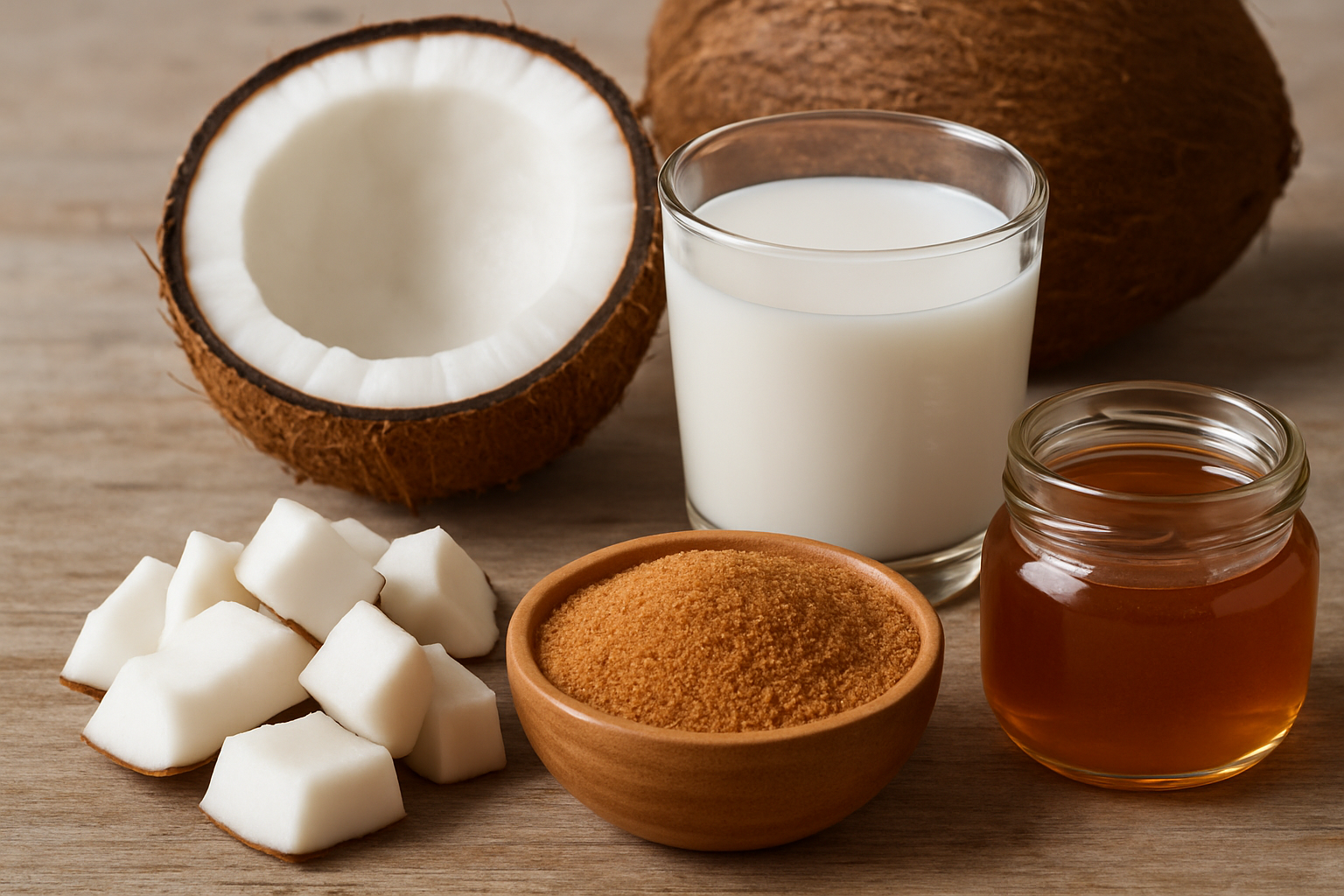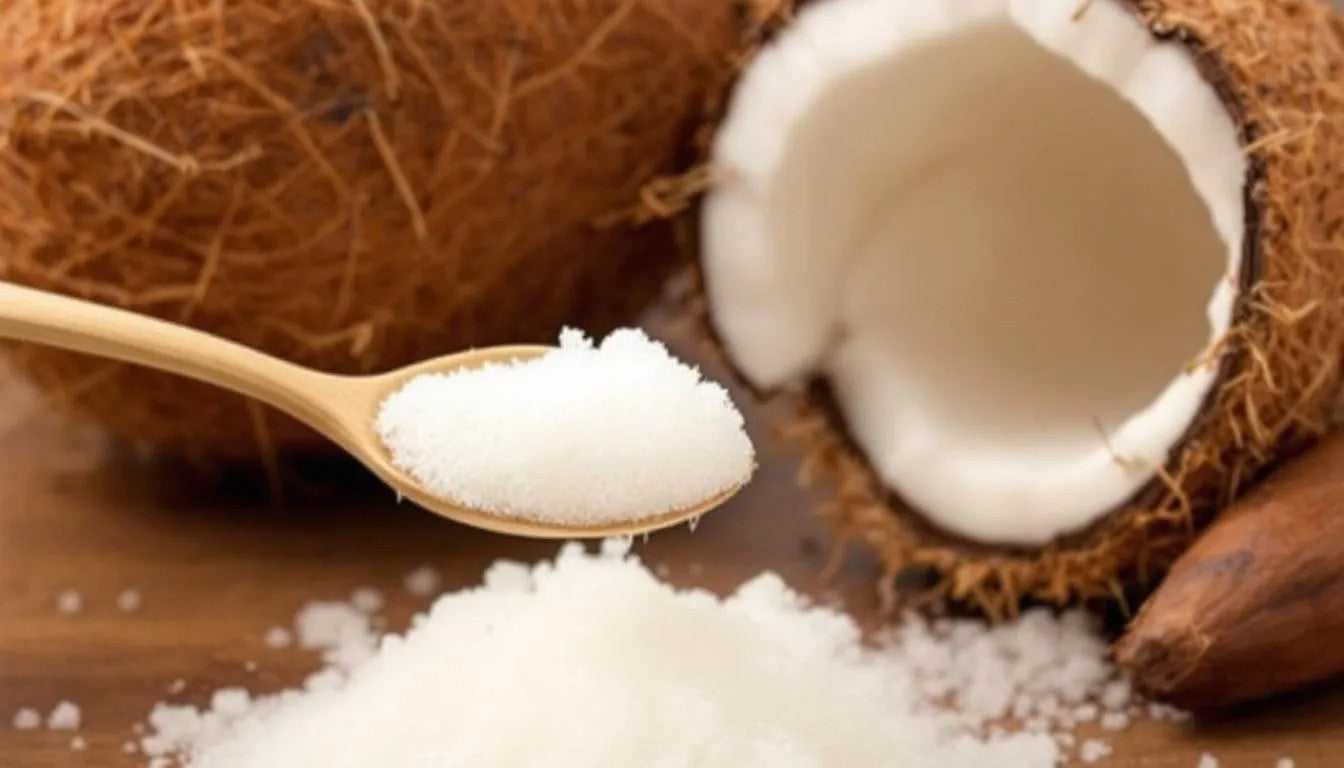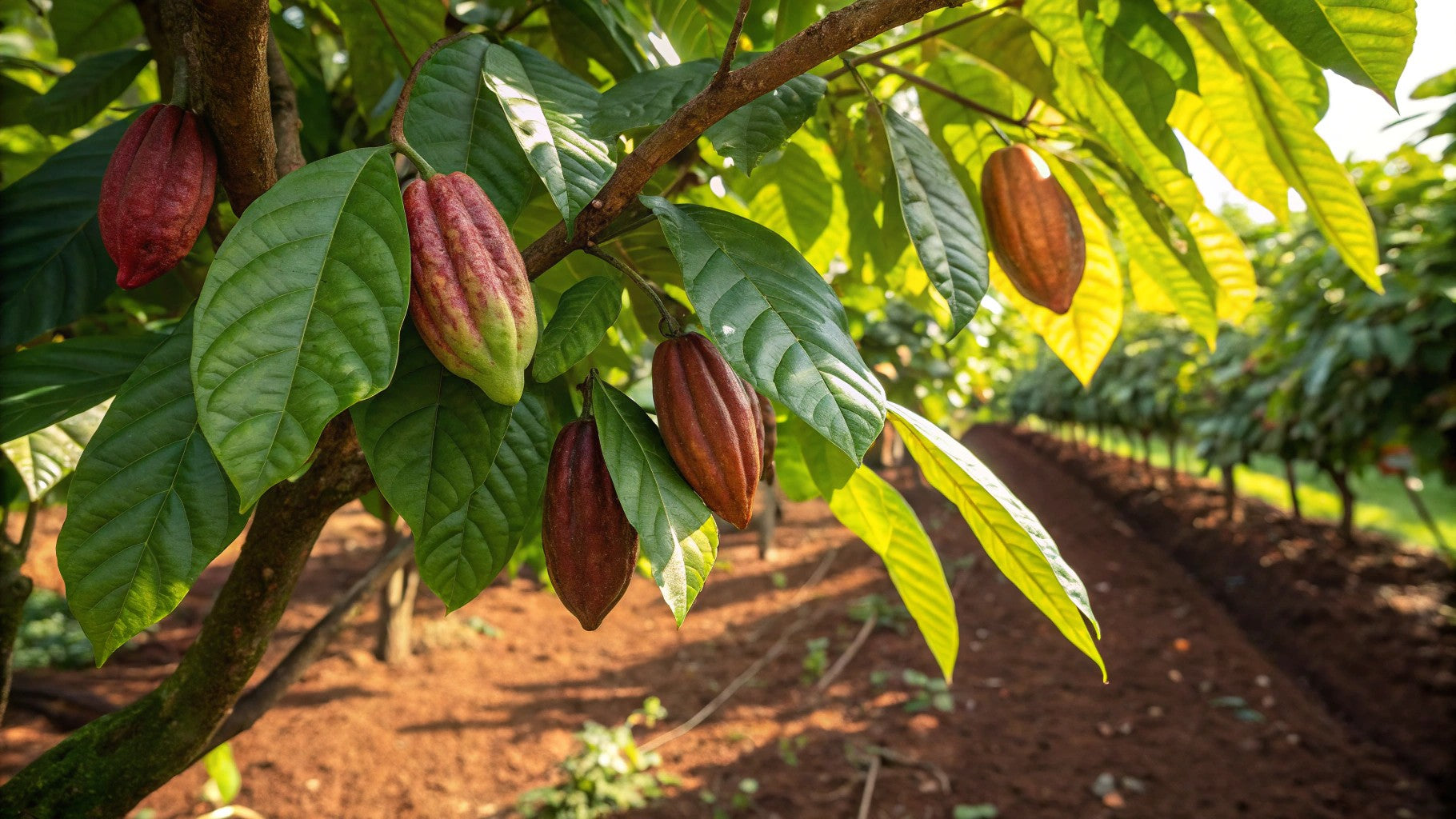
Sugar and Coconut: The Dynamic Duo Transforming Healthy Treats
When it comes to creating delicious yet health-conscious confections, two ingredients stand out for their versatility, flavor profiles, and nutritional advantages: sugar and coconut. At Coracao Confections, we've long recognized the magic that happens when these two elements are thoughtfully combined or when coconut-derived sweeteners replace conventional sugar entirely. This powerful pairing has revolutionized our approach to chocolate making, allowing us to craft treats that satisfy both in taste and nutritional profile.
In this comprehensive guide, we'll explore the fascinating relationship between sugar and coconut, from traditional combinations to innovative coconut-based sweeteners. We'll dive into how these ingredients work together to enhance flavor while offering potential health benefits, and share practical ways to incorporate them into your own kitchen creations.
The Sweet World of Coconut: Understanding Nature's Versatile Fruit
The coconut palm (Cocos nucifera) has been called the "tree of life" in many cultures for good reason—virtually every part of this remarkable plant can be used. When it comes to sweetness, coconut offers multiple options that provide alternatives to conventional sugar:
Coconut Sugar: The Caramel-Like Sweetener
Derived from the sap of coconut palm blossoms, coconut sugar has gained popularity as a natural alternative to refined sugar. With its rich, caramel-like flavor profile and lower glycemic index compared to white sugar, it's become a staple ingredient in health-conscious baking and confectionery.
At Coracao Confections, we use organic coconut sugar in many of our products, including our popular Berkeley Bar Vegan Chocolates, providing a complex sweetness that enhances rather than overpowers the delicate flavors of our premium cacao.
Coconut Nectar: Liquid Gold
Before it's crystallized into sugar, coconut sap exists as a liquid nectar that can be used as a syrup-like sweetener. With a consistency similar to maple syrup but a more neutral flavor profile, coconut nectar works beautifully as a liquid sweetener in various applications.
Coconut Flesh: Natural Sweetness
The white meat of the coconut itself contains natural sugars that provide subtle sweetness. When dried or toasted, these sugars caramelize, intensifying the sweet flavor. Our Sugar Free Coconut Milk Chocolate harnesses the natural sweetness of coconut while avoiding added sugars altogether.

Traditional Sugar and Coconut Pairings: A Match Made in Culinary Heaven
Long before modern health food trends, cultures around the world recognized the delightful combination of coconut and sweeteners:
Classic Coconut Macaroons
These beloved treats combine shredded coconut with sugar and egg whites (or vegan alternatives) for a simple yet irresistible cookie. The sugar caramelizes the coconut edges while keeping the interior moist and chewy.
Thai Coconut Sticky Rice
This traditional dessert pairs sweetened glutinous rice with coconut milk and fresh mango, creating a harmonious balance of flavors and textures that has stood the test of time.
Caribbean Coconut Candy
Throughout the Caribbean, various forms of coconut candies combine grated coconut with sugar to create firm, sweet confections often flavored with spices like ginger or cinnamon.
Filipino Kalamay
This thick, sticky dessert combines glutinous rice, coconut milk, and brown sugar or coconut sugar, showcasing how these ingredients have been paired in Southeast Asian cuisine for centuries.
These traditional preparations demonstrate the long-standing culinary recognition that sugar and coconut complement each other beautifully, each enhancing the other's best qualities.
The Science of Sweetness: How Sugar and Coconut Work Together
The successful pairing of sugar and coconut isn't just about tradition—there's food science at play:
Complementary Flavor Profiles
Coconut's subtle tropical flavor contains both sweet and savory notes. When paired with sugar, the sweetness is amplified while the rich, fatty qualities of coconut create depth and mouthfeel that sugar alone cannot provide.
Fat and Sugar: The Perfect Balance
Coconut's high fat content, primarily in the form of medium-chain triglycerides (MCTs), creates a satisfying mouthfeel that slows the absorption of sugar. This may contribute to a more gradual energy release compared to sugar consumed on its own.
Textural Harmony
Sugar's crystalline structure and coconut's fibrous texture create an interesting interplay that can be manipulated to create everything from crisp cookies to chewy candies to smooth, creamy chocolates.
For a delicious example of this scientific harmony in action, try our Quinoa Crunch Sugar Free Milk Chocolate, which uses coconut milk to create a creamy "milk" chocolate without dairy.

Health Advantages: Why This Pairing Shines in Nutritious Treats
Beyond the delicious flavor combinations, there are potential health advantages to pairing coconut with natural sweeteners or using coconut-derived sugars:
Lower Glycemic Impact
Coconut sugar has a glycemic index of approximately 35, compared to around 65 for table sugar. When combined with the fat and fiber in coconut, the glycemic impact may be further reduced, potentially leading to more stable blood sugar levels.
Nutrient Retention
Unlike highly processed white sugar, coconut sugar retains some nutrients from the original sap, including small amounts of minerals like iron, zinc, calcium, and potassium, as well as some antioxidants.
Beneficial Fats
Coconut contains medium-chain triglycerides (MCTs), a type of fat that the body can use for energy more quickly than other fats. These MCTs may help support metabolic health when consumed as part of a balanced diet.
Prebiotic Benefits
Coconut sugar naturally contains inulin, a type of soluble fiber that functions as a prebiotic, potentially supporting beneficial gut bacteria. Combining this with the fiber found in coconut flesh or flour can further enhance digestive health.
Satiety Factor
The combination of fat, fiber, and sweetness can create a more satisfying treat that may help reduce cravings for conventional sweets, potentially supporting overall balanced eating patterns.
For more information on how natural sweeteners can complement the inherent health benefits of quality chocolate, check out our blog post on Benefits of Dark Chocolate.
Coconut and Sugar in Chocolate Making: The Coracao Approach
At Coracao Confections, we've pioneered innovative approaches to combining coconut and sweeteners in our artisanal chocolate products:
Coconut Sugar as Primary Sweetener
We use organic coconut sugar as our primary sweetener across many products, including our Vegan Dark Chocolate 81% and Salted Caramel Chocolate Bars. This provides a complex sweetness that enhances the natural flavor notes in our premium cacao.
Coconut Milk as Dairy Alternative
Traditional milk chocolate relies on dairy to create its characteristic creamy texture. We use coconut milk to create velvety vegan "milk" chocolates that rival conventional versions in taste and texture while remaining plant-based and dairy-free.
Coconut Oil in Confections
The unique melting properties of coconut oil—solid at room temperature but melting at body temperature—make it ideal for confections with a perfect snap and melt-in-your-mouth quality.
Coconut Flour in Specialized Recipes
For certain products, we incorporate coconut flour, which adds fiber, subtle flavor, and textural elements while remaining grain-free and aligned with various dietary approaches.
Complete Sugar-Free Options
For those avoiding all added sugars, our Unsweetened Dark Sugar Free Chocolate 99% showcases the pure flavor of premium cacao, while our coconut-based products leverage the natural sweetness inherent in coconut.

Creative Applications: Sugar and Coconut in Your Kitchen
Inspired to experiment with sugar and coconut in your own kitchen? Here are some practical applications:
Baking with Coconut Sugar
Coconut sugar can generally replace regular sugar at a 1:1 ratio in baking recipes, though it will impart a deeper, more caramel-like flavor. It works particularly well in:
- Chocolate chip cookies
- Brownies and blondies
- Coffee cakes and muffins
- Granola and energy bars
Coconut Milk Sweetened Naturally
Create delicious beverages by combining coconut milk with natural sweeteners:
- Golden milk with coconut sugar and turmeric
- Chocolate coconut milk using our Organic Cacao Powder and a touch of coconut sugar
- Coconut milk chai with maple syrup
- Tropical smoothies sweetened with fruit and a touch of coconut sugar
No-Bake Treats
The binding properties of coconut oil and coconut butter make them perfect for no-bake treats:
- Energy balls combining nuts, coconut, dried fruit, and a touch of coconut sugar
- Refrigerator chocolates made with coconut oil, cacao powder, and coconut sugar
- No-bake coconut bars with layers of different textures and flavors
- Raw coconut macaroons held together with coconut nectar
Homemade Chocolate Creations
Create your own chocolate treats with our pantry ingredients:
- Combine our Organic Cacao Butter with Organic Cacao Powder and coconut sugar for homemade chocolate
- Make chocolate bark with melted dark chocolate, toasted coconut, and a sprinkle of coconut sugar for texture
- Create chocolate coconut truffles with coconut milk, melted chocolate, and a touch of natural sweetener
For more creative culinary applications, explore our blog post on How to Make Great Chocolate Milk, which can be adapted using coconut milk and coconut sugar.
Sustainability Considerations: The Environmental Impact of Sugar and Coconut
As a company committed to environmental stewardship, we consider the sustainability aspects of our ingredients:
Coconut Sugar Sustainability
When properly harvested, coconut sugar is considered one of the most sustainable sweetener options. The UN Food and Agriculture Organization has recognized it as highly sustainable because:
- Coconut palms require minimal water and maintenance compared to sugar cane
- They can produce for decades with proper care
- They grow in diverse agroforestry systems that support biodiversity
- Production typically involves traditional, low-impact methods
Coconut Farming Practices
Not all coconut production is equal, however. We seek sources that:
- Avoid monocropping
- Support smallholder farmers with fair wages
- Utilize the entire coconut to minimize waste
- Implement regenerative agricultural practices when possible
Sugar Industry Alternatives
By choosing coconut sugar and other natural alternatives, we support a shift away from conventional sugar production, which has been associated with:
- Extensive land clearing
- Heavy water usage
- Intensive use of pesticides and fertilizers
- Labor concerns in some regions
As a Certified Climate Neutral company, these considerations play an important role in our ingredient selection process at Coracao Confections.
Frequently Asked Questions About Sugar and Coconut
What's the difference between coconut sugar and regular sugar?
Coconut sugar comes from the sap of coconut palm blossoms, while regular sugar is derived from sugar cane or sugar beets. Coconut sugar undergoes less processing, retains some natural nutrients, and has a lower glycemic index (approximately 35 compared to 65 for table sugar). It also has a more complex, caramel-like flavor profile.
Does coconut sugar taste like coconut?
Despite its name, coconut sugar doesn't taste like coconut. It has a rich, warm flavor similar to brown sugar with caramel notes. This makes it versatile for baking and confectionery where you want natural sweetness without a distinct coconut flavor.
Can I substitute coconut sugar for regular sugar in recipes?
Yes, coconut sugar can generally be substituted at a 1:1 ratio for white or brown sugar in most recipes. However, it may make baked goods slightly darker and less sweet, with a more complex flavor profile. You might need minor adjustments in moisture or leavening agents for some delicate recipes.
Is coconut sugar healthier than regular sugar?
While coconut sugar is still a sugar and should be consumed in moderation, it offers several advantages over refined sugar. It contains small amounts of minerals, some inulin fiber, and has a lower glycemic index. However, the calorie content is similar to regular sugar.
How do sugar and coconut enhance chocolate?
Sugar enhances the natural flavor compounds in chocolate while balancing its inherent bitterness. Coconut adds richness, creaminess, and complex flavor notes that complement chocolate's profile. Together, they can create a more satisfying chocolate experience with potentially slower sugar absorption due to coconut's fat content.
Embracing the Harmony of Sugar and Coconut in Mindful Indulgence
The thoughtful combination of sugar and coconut represents a perfect example of how traditional wisdom and modern nutritional understanding can come together to create foods that satisfy on multiple levels. At Coracao Confections, we continue to explore the potential of these ingredients to create chocolate products that honor both culinary excellence and bodily wellbeing.
Whether you're enjoying our Superberry Vegan Chocolate Bars sweetened with coconut sugar, savoring the natural coconut goodness in our Sugar Free Coconut Milk Chocolate, or experimenting with these ingredients in your own kitchen, the pairing of sugar and coconut offers a path to more mindful sweetness.
By understanding the unique properties of these ingredients and how they work together, we can create treats that delight the senses while honoring our commitment to quality, sustainability, and well-being—proving once again that conscious indulgence is not only possible but preferable.
Ready to explore the delicious world of chocolate made with thoughtful sugar and coconut combinations? Discover our collection of organic, vegan chocolate products crafted with these principles in mind.
Shop our collection and experience the difference that mindful ingredient selection makes in premium chocolate confections.

Claire Bennett
I'm Claire, a chocolate lover and artisan based in a small town where I run a tiny home kitchen dedicated to exploring everything chocolate. From single-origin dark bars to creamy ganache and handmade truffles, I find joy in working with all types of chocolate. I believe chocolate has a story, and I love bringing that story to life through humble, heartfelt creations.



Leave a comment
This site is protected by hCaptcha and the hCaptcha Privacy Policy and Terms of Service apply.